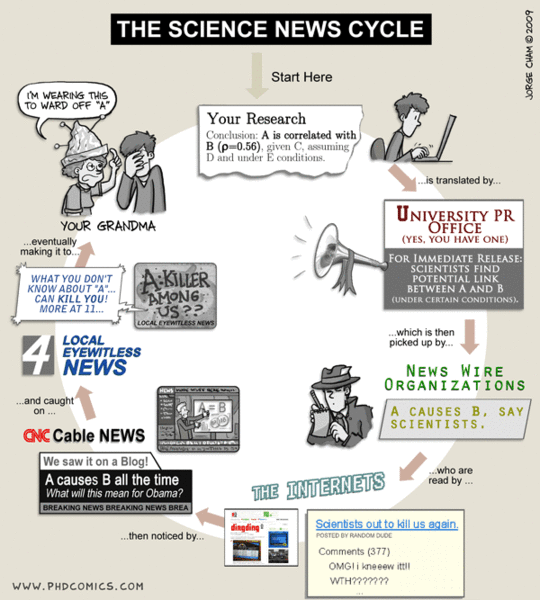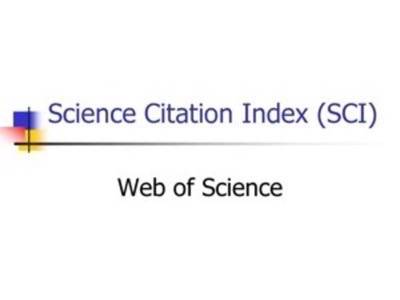While the SxSW conference is already a distant memory, some of us are still catching up on the recorded sessions. One worth listening to is a discussion by Gideon Lichfield, the media editor of The Economist, and Matt Thompson, the editorial production manager for NPR. The session covered What Journalism Can Learn from Science, and looked at some interesting issues for practicing journalists.

There are plenty of things that we in the tech trade press – the general press, too – can learn from the science research community. Both groups formulate and test various hypotheses. Journalists try to find sources that agree with the hypothesis, scientists try to observe data to prove or disprove their theories. The two sides have very different aims, goals and approaches, but both are trying to find the “truth” in their own ways.
Mentioned during the session was the science news cycle that was part of a Jorge Cham comic, wherein a scientist’s tentative findings are turned into a certainty by the evening TV news. We certainly need to do better at interpreting what a researcher finds before accidentally creating new “facts.”
Comic reprinted by permission from “Piled Higher and Deeper” by Jorge Cham at www.phdcomics.com

The session explored how to make journalism more like science, and the presenters mentioned that journalists need to improve their work by using new tools – such as Storify– that include three key characteristics:
- Self-justifying, or useful to the journalist in helping us do our jobs better,
- Interoperable in a bunch of different environments, something that we can just plug into our blog, content management system or whatever, without a lot of programming or customization, and
- Easy to use, especially by journalists who aren’t going to spend a lot of time trying out and learning new tools.
While the presenters didn’t mention options beyond Storify, journalists already use a number of tools that fit their description, including RSS readers, site traffic analyzers and social media groups to track information and keep up-to-date on trending topics.
Finally, the duo mentioned three important aspects of science that journalists need to embrace, understand and work on improving:

- Being collaborative. Scientists take it for granted that they are working together to build a body of work. To help, there exists the Thomson Reuters Science Citation Index that can be used to measure one’s reputation and lists references from 3,700 of the world’s leading scientific and technical journals across 100 disciplines.
- Being replicable, meaning you can see the methodology used and how we reached our conclusions. Scientists do this with footnotes, and while no one is suggesting that journalists start adding footnotes to blog posts, there is a need to do a better job of exposing journalistic methods and how a particular fact or quote was obtained. One effort used by a few news sites is Document Cloud, where you can check out the story’s source materials merely by clicking on them.
- Being predictive. The panel mentioned the “Friedman Unit.” Based on the writings of The New York Times columnist Tom Friedman, the Friedman Unit is the amount of time it takes for readers to forget a journalist’s predictions. It’s not very long. This gets at the notion that while journalists often fill stories with predictive claims, they seldom seem to return to them to see if things really did turn out that way – except perhaps in the occasional end-of-year wrap up piece.
Journalists – and society – could use a prediction tracker to hold us more accountable, and see how our prognostications have turned out. Politifact does this on its website by reporting on Obama’s various promises, as shown in the screengrab below:

Science and journalism are both about observing the world and using those observations to understand how the world will be in the future. What journalism can borrow from science is the requirement to better track how well our observations actually perform at helping us understand and predict what’s likely to happen next.










